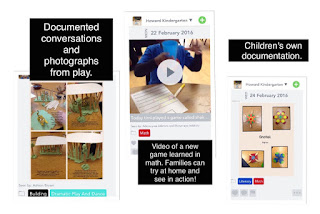Home » Connecting with Families about Self Regulation
Posted by:
Categories
Date
When looking through the self regulation lens, including parents and families is not an optional piece. It is crucial that families are not only considered but involved in the process.
However, this does not mean that we front load and overwhelm parents with our new scientific knowledge of self regulation and our expectations for them to solve the problem. Rather, it allows us to approach behaviour and things that we are noticing as a team with a wider scope lens.
Inviting families in to discuss their children’s behaviour can naturally increase their stress level. It is important to be aware of this as educators so that we can reduce their stress through our interactions and our approach to the meeting. The intention of these meetings should not be to simply tell the parent what is happening and expect the behaviours to be resolved from their end. If we work together collaboratively we will be able to build a bigger picture of the students’ life and gain insight as to how we can work as a team to support them.
Something we might say to begin a meeting…
“We wanted to meet today to talk about S’s stress levels. In our classroom, we don’t see behaviour as misbehaviour we see it as a sign of stress. Our hopes are that we can share what we have been seeing and some of the stresses that we have noticed. It will be helpful to know if you have seen similar behaviours or patterns at home so that we can brainstorm together ways to reduce their stress and support them in regulating at both home and school.”
When educators stress levels are high they can view behaviours as “misbheaviours” more easily. They may catch themselves critiquing. For example, “their parents must not care because S never gets enough sleep”.
“A criticism is just a really bad way of making a request. So why not just make the request?”
– Diane Sawyer
This is why it is crucial that we have such good relationships with families so that when we are making these requests for help there is a genuine connection and desire to help the child in reducing their stress.
We spend time at the beginning of the year making connections with our families in different ways. We know and understand that with a strong relationship comes trust, openness and better communication.

We host open houses monthly to connect with families. During this time, we are able to connect with families and support them in connecting with each other. We celebrate the children’s learning and growth as a community.
We also connect with families briefly during pick up and drop off. We try to share successes to give them insight from the day.
Parents and Kindergarten: Parent Video filmed by Atkinson Centre in our classroom
We have grown to love using SeeSaw as a daily communication and connection tool with our families (SeeSaw Blog). Through SeeSaw we are able to share with families the daily activities and learning that is happening through the day. Families have shared that they truly appreciate being able to see their children’s day in action and feel more connected to what is happening at school.

SeeSaw allows families to comment back and forth with us and the students. It also provides conversation pieces to build relationships at home. We have started to share self regulation strategies that are working for children in the classroom via SeeSaw (e.g., S listened to music today while drawing to support them in feeling calm). These small insights provide families with context in the strategies that we are trying and using with individual children.
“Take it personally; self-regulation is always personal. Building relationships is the first principle of practice self-regulation”
– Dr. Stuart Shanker
Sign up for our mailing list if you would like to stay connected, learn about new ideas that can be implemented in your classroom, get access to exclusive material and offers.
We respect your privacy.
Copyright 2019 – PCE Connecting Learners. | Designed & Developed by BrandCo House.
